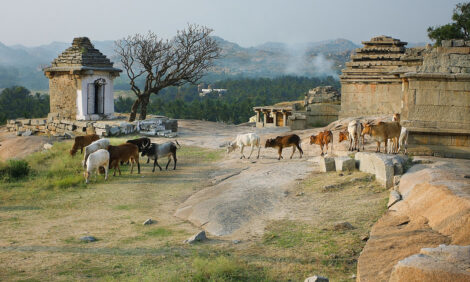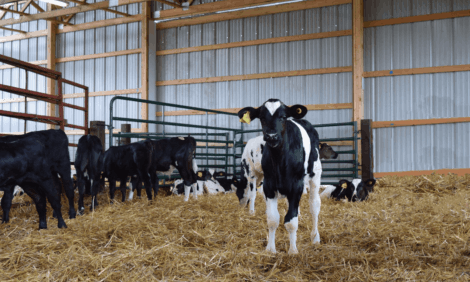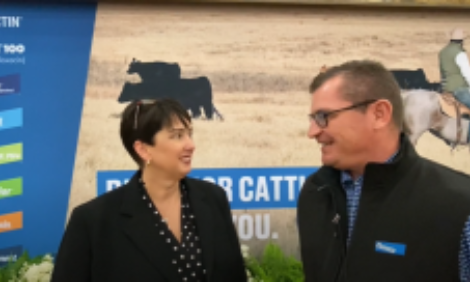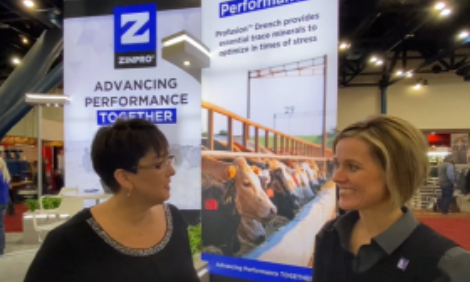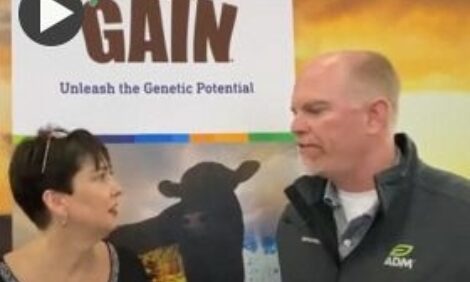



Mature US beef market should focus on exports, quality – analyst
America’s selling point is beef qualityPart of Series:
< Previous Article in Series
The US cattle market has reached maturity and should work to expand export markets if further development is the goal, Don Close, a senior RaboResearch Food & Agribusiness analyst, said earlier this year at a National Cattlemen’s Beef Association (NCBA) meeting.
Close, who is responsible for analysing all animal protein sectors in North America, suggested that tariffs, quotas and trade deals are not the way to go. Instead, he said, industry should work to meet the demands of key customers. In his talk, he explored the drivers and concerns of key competitors, as well as the demands of primary customers.
“The US is sitting in an absolute pristine spot to be a leader in global exports,” he said.
Currently, most of US beef trade is done within North America itself, but Close said it’s a case of the dog biting its own tail, as trade issues between Canada and Mexico continue to surface.
“We could be much more productive if we would be more collaborative,” he said.
US beef exports have increased phenomenally over the past two years, he said, and that is largely due to China.
“We expect to see this to continue to grow,” said Close. “Our forecasts are that we think that we will see – even with the contraction of total cattle supply we’re expecting for 2022 – we're still looking for net exports to grow something in around 2% to 4%.”
“Again, it is very directly tied to the demand from China,” he added.
Quality will drive market growth
According to Close, America’s selling point is quality, and while beef quality has substantially improved over the past 25 years, Close believes there’s still room for further improvement.
“The genetic power that is built into the cattle that we have today is just phenomenal,” he said.
Beef quality is generally seen as the percentage of choice and prime, and in that regard, US beef quality has improved greatly. American beef farmers have gone from producing 55% choice and prime carcass to consistently producing 80% to 85% over the last 25 years.
“I think that cattle quality will only continue to get better,” he said. “But don't think for a second that our primary competitors, certainly Australia and Brazil, are pushing to produce more quality product because they want a slice of that premium pie.”
In order to further take advantage of the edge quality provides Close believes the beef industry should look specifically at feed efficiency and feed conversion.
Potential trade disruptors
In his NCBA talk, Close said there’s a lot of misunderstanding around how American farmers produce beef. Europeans, he said, also have a hard time looking at the size of production and the scale of feedlots in the US and believing it’s sustainable.
“We have a very big challenge in terms of educating Europeans in terms of what we do,” he said.
Looking to the Indian market, Close said he expects it continue to grow. Close’s assessment is in line with a recent USDA Foreign Agricultural Service (FAS) report, which forecast carabeef and beef production to rise in 2022 to approximately 4.5 million metric tons (MMT), an increase of nearly 7% from the market year 2021 estimate of 4.2 million metric tons. (Source: https://www.fas.usda.gov/data/india-livestock-and-products-semi-annual-6)
Currently, there are 300 million cattle in India, but most support dairy production. However, one of the by-products of the dairy industry is carabeef, a breed of cattle derived from the Asian domestic water buffalo. India’s 2022 carabeef and beef consumption is forecast at 2.9 MMT, representing a nearly 5% increase from last year’s estimate of about 2.8 million metric tons.
Indonesia represents another interesting market, said Close. On average, the country imports approximately 50,000 feeder cattle each month from Australia. The cattle are finished on feedlots on low-cost feed ingredients, including palm oil and pineapple by-products, said Close. However, Indonesia recently brought in a new policy that could disrupt feed costs. The policy aims to use 30% palm oil in gasoline, which means much of the palm oil that was used for the livestock sector will now be diverted for fuel.
Close did note, though, that government policy regarding agricultural trade tends to frequently flip-flop in Indonesia. When food prices rise and consumers start protesting, the government typically opens up the market and floods it with whatever commodity is needed, said Close.
“As soon as they do that, obviously the prices start to go down,” he said. “When that happens, the farmers will start protesting because their commodity isn’t worth anything, so the government will, in turn, cut off imports and prices go up.”
“It's just a constant seesaw of food directing policy,” he added. “But it creates a lot of volatility in the global market.”
On competition
In terms of which countries import beef into the US, Close pointed to Australia and New Zealand as its biggest competition. Australia is unique in that it has two totally different production systems. The cattle in the north are entirely grass-fed, while cattle in the south are most Gardiner Angus genetics. The US mostly imports beef from the northern cattle.
New Zealand is another interesting case, as the country offers the perfect environment for raising grass-fed cattle. While they do produce some beef, their main focus is dairy.
Brazilian beef imports are growing and will continue to do so in the future, said Close.
Brazil has water, land and feed. They also have the genetics and the capability to boost production considerably.
“If we think that Brazil will never have the capacity to be competitive with US fed cattle and quality beef, don't bet on it,” he said.
Argentina could also be seen as a competitor in the future. While the environment in Argentina is much more conducive to cattle production than Brazil, Close said that its government there is just too unstable to rely on.
US exports markets continue to grow
The biggest buyer of US beef is Japan, and Close said he expects Japan to remain the US’s largest customer in the foreseeable future. South Korea comes in at a close second in terms of volume and sales, followed by Mexico.
Growth has been driven, in part, by circumstances beyond anyone’s control, including a massive outbreak of African swine fever in China, which quickly drove pork prices up.
“When that happened, beef was clearly the value buy,” said Close. “Economics work.”
The second factor that drove exports was the Covid-19 crisis. When the pandemic hit, Chinese consumers were no longer able to eat in restaurants, a place where the majority of beef was consumed. Chinese consumers tried cooking beef at home, something they previously had not done. Close believes the combination of competitive prices and a willingness to cook at home by more adventurous consumers advanced sales way ahead of expectations.
“We think we've moved that trend 10 years ahead of where it would have been without the double whammy of those two disruptions,” he said, adding that he believes demand from China will continue to strengthen.
Quality is the goal
While questions around the sustainability of beef production will continue, so too will growth if producers focus on developing markets. In order to develop export markets, Close reiterated that producers should continue to focus on quality as its main selling point.
“Beef is not a homogeneous product,” he said. “There is still great differentiation between countries, between products, between genetics, between cattle management. We have the lead there, we can't afford to give it away.”


